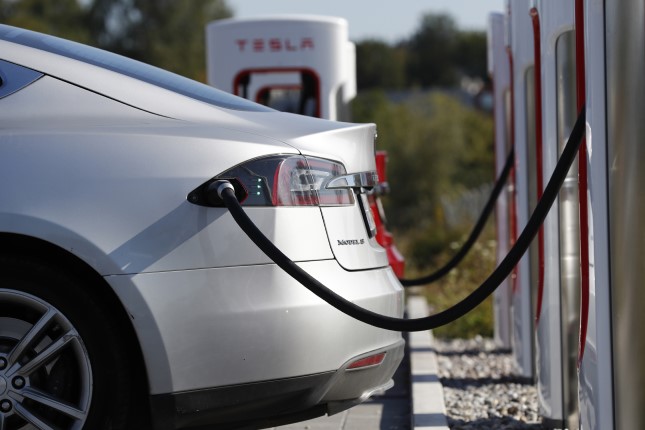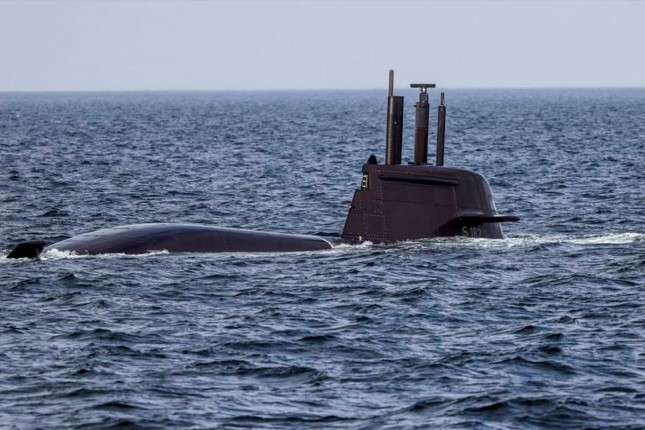In March, the European Union issued its approval for the continued production of cars fitted with the customary internal combustion engines (ICEs) beyond 2035, as long as they run on climate neutral e-fuels. Does this represent a setback for all the haters of oil out there? And won't the smell of internal combustion engine's exhaust be soon perceived as something akin to the aroma of a high-end wine?
What exactly is e-fuel?
It is common knowledge that Germany, backed by Italy, had long been at loggerheads with the European Commission over the latter's intentions to ban new registrations of cars powered by internal combustion engines after 2035. Until, ultimately, Germany managed to get the upper hand by persuading the EC in March 2023 to make an exception for combustion engines running on e-fuels. In a nutshell, this means that even post-2035 it would still be possible to register a car fitted with an ICE in the European Union. And although European decision makers are known for their penchant for reversing their decisions, the very fact that e-fuels have been equated to zero-carbon fuel gives Russian vertically integrated oil companies hope that the hydrocarbons market will continue to exist. But let us go over this latest development bit by bit.
In 2015 through 2019, at the height of the green agenda's rise to prominence in the West, many automotive majors, including Audi, Volkswagen, Volvo, Mercedes-Benz and others, made public announcements of their intention to stop developing further generations of internal combustion engines. More likely than not, making a commitment as far-reaching as that could not be an easy thing to do for automakers with a decades-long track record but the pressure of the green lobby turned out to be stronger than tradition. Which leads to an important observation: despite the strong demand for ICE-powered vehicles in developing countries, many of Europe's car manufacturers were only going to sell electric cars worldwide come 2035.
With the recent EU decision, the course of the automotive industry is changing again. E-vehicles, ICEs, hybrid and hydrogen vehicles will be in a fierce competition with each other since each type of fuel has its own unique competitive advantages. Granted, the more choice there is the better, but let us focus specifically on the e-fuel, representing hydrocarbons' last chance.
Despite its "green" sounding name, e-fuel, also known as EFuel, electrofuel, Power-to-Liquids, or PtL, is actually an artificially synthesized hydrocarbon (similar to gasoline, diesel, methane, methanol, etc.), no different in its makeup from the fuel that comes from refineries. In order to produce it, all one needs is hydrogen and CO2, which are then used to synthesize the fuel via a methanol process. For the e-fuel to be considered carbon-neutral, the hydrogen must be produced through a process of electrolysis of water powered by a sustainable source of energy (the so-called "green" hydrogen), while the CO2 has to be captured directly from the air. The CO2 coming out from a car's exhaust pipe would then be counterbalanced by the CO2 previously captured from the atmosphere. It is believed that e-fuels can reduce CO2 emissions by up to 90% compared to conventional ICE vehicles.
One does not need to be an expert to figure out that the cost of such fuel will be several times higher than that of oil-based fuel. However, more detailed estimates vary widely, which is not at all unusual when any kind of new technology is being introduced. In 2015, Germany's Energy Agency Dena valued the production cost of such a fuel at EUR 3.5-5 per litre net of taxes compared with the production cost of regular fuel coming from refineries at EUR 0.5 per litre, whereas Shell believes that the cost of e-fuel will drop to below EUR 1 per litre by 2050. According to Frontier Economics, the price of e-fuel will come down to less than EUR 2 per litre by 2030.
This fuel's high cost is driven by the high energy costs associated with the need to use electrolysis, as well as by the costliness of currently available technologies for capturing CO2 from the air. In all, 4 litres of water, 90 MJ of electricity and 3 kg of CO2 are needed to produce just 1 litre of liquid e-fuel.
The plight of internal combustion engines
2025 will see a new environmental standard, Euro 7, come into force, expected to be super strict with respect to the pollutants' concentration in cars' exhaust gases. It was largely in anticipation of the arrival of the Euro 7 standard that automakers chose to switch to developing electric vehicles seeing as they did that their equivalent ICE-based vehicles were lagging behind cost-wise.
As for the conventional petrol engines, it is mostly premium car brand producers that are still clinging to those although even they will have to give up their powerful 12-cylinder W12 engines since trying to make them comply with Euro 7 standard's stringent fuel efficiency requirements is perceived as a lost cause.
E-fuel's adoption has been lobbied by the likes of Porsche and Ferrari which makes total sense considering that well-to-do owners of their luxury vehicles can easily afford to buy fuel at EUR 5 per litre. In this sense, these two companies' intentions seem to be dead serious.
Porsche, for one, together with Siemens, Enel and a number of other partners, has invested USD 74 million in its Haru Oni project to produce e-fuel in Chile where its initial output was set to reach 130,000 litres of e-fuel by the end of 2022. The project partners aim to scale this up to 55 million litres by the end of 2024 and to more than 550 million litres in 2026 at the cost of as low as USD 2 per litre. The expectation is that, initially, the e-fuel thus produced will be used at motorsport tournaments as well as for research purposes.
Construction of yet another plant, Norsk EFuel, is slated to begin this year in Norway. Its production capacity will be scaled up to 25 million litres by 2026 and to 100 million litres in 2029. The e-fuel manufactured at the plant will be used in the aviation industry.
That said, there are reasons to believe that adoption of e-fuels comes five years too late, since the world's largest automakers (VAG, Mercedes-Benz, Volvo, BMW, and many others) have already invested tens of billions of dollars in developing electric vehicle technologies (including the development of new models, building mega-sized factories for producing charging batteries, marketing, and developing the car charging infrastructure). That is why the European Commission's sudden about-turn and its unexpected endorsement of e-fuel was met by automakers without much enthusiasm, to put it mildly.
It is clear that the cost of production is the central question upon which the future of ICE will hang: will e-fuels be able compete with electric vehicles and hydrogen? In the coming decade, e-fuel will be used primarily for marketing purposes: it is expected that supercars and Formula 1 race cars will all convert to e-fuel, thus advertising the "new" type of a "pollution-free" ICE.
In the meantime, engineers will be trying their best working behind the scenes in an attempt to reduce the cost of this synthetic gasoline for use by the general public. And perhaps the new ICE might stand a chance to hold on to the European market at least until 2050.
The principal advantage of fuel produced from oil, even if it is called electrofuel, is its relative predictability in terms production economics. Oil companies always know how much and what type of fuel they will be able to produce, at what cost, and how long it will take them to bring it to market. In the case of hydrogen, there is a challenge of how to store and ship it: high-pressure cylinders are not very safe, industrial-scale storage in underground gas storage facilities is difficult technologically, and transportation costs are too high.
The EV may be the most efficient mode of transport in terms of efficiency, but energy storage using batteries remains to be the bottleneck of all electric vehicles. In addition, the prices of copper, nickel, and lithium are currently on the rise.
But all of these three types of fuels have one common weakness: renewable energy with its unstable production. If there is no wind or if the sky is overcast, the price of electricity will go up sharply, and production of "green" hydrogen and e-fuels may come to a halt altogether. The situation can be helped by either creating commercial reserves of e-fuel, or by getting gas and/or coal-fired power plants involved in the process of e-fuel production.
But what about trucks and other commercial vehicles, aircraft and various types of specialized equipment? Engineers around the world are actively developing electric trucks and hauling vehicles, but things are still a long way off from the scale of production similar to that of electric passenger cars. Tesla happened to be the first to blaze the trail here, again, when it introduced its Semi semi-truck at a presentation held in 2017.
Prior to that, experts had claimed that a truck like that could only have a range of no more than 480 km on a single charge because otherwise the battery would be too heavy and expensive. But at the truck's presentation, Elon Musk promised it would have a range of 800 km while carrying a load of 36 tonnes, and that a quick charge would restore 70% of the charge in just 30 minutes. The first Semi haulers went into service at the end of 2022 (commissioned by PepsiCo), but this time around no high-profile claims about charging speeds were made and the company issued a warning about possible production postponements.
This brings to mind the story of Nikola Corp., the hydrogen and electric truck startup. Trevor Milton, the startup's founder, positioned his company as a major competitor of Tesla, and, following its 2020 IPO, the company's market capitalization climbed up to an astronomical figure of USD 34 billion, without even having built a single prototype!
Nikola made a sensational claim about having managed to bring the cost of hydrogen down by 81%, but in the end investors' dreams were shattered by a torrent of fraud allegations. Perhaps the most memorable stunt was the company's marketing video that shows a truck appearing to drive on its own power when it was actually rolling down a hill where it had been pulled earlier.
As indirect evidence that commercial vehicles are far from being ready to switch to electricity, one could recall China's active involvement in developing LNG-powered trucks. China has long been a leader in producing electric vehicles, and Chinese battery technology is 10 years ahead of Europe's. But for some reason, Chinese entrepreneurs are converting their fleets to LNG rather than electricity.
The problem is not only with EVs' insufficient range, but also with the need for developing a costly charging infrastructure. While it might be relatively easy to do this in densely populated Europe, the United States with its highways poses a daunting challenge. With e-fuel, however, there is no need to build a distribution network as e-fuel can be sold at existing gas stations without any additional investment.

































